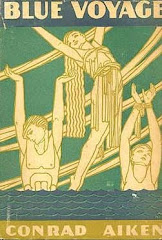
There were actually two ships with the name Inglewood, the first was a sailing ship which was the one that intrigued Lowry when he saw the Sable Island wreck map indicating the wreck of the ship with the same name as his childhood home; the second was a barque.
Inglewoode: Sailing Ship Circa 1890s?
The ship's name was spelt Inglewoode as can be seen on the above photograph of the name board.
Here is the caption from the Wreck Site archives:
Inglewood was on voyage from Halifax, Nova Scotia, Canada to Cow Bay, Nova Scotia, Canada. On the 27th April 1893, Inglewood ran aground, off Sable Island, north side near centre of island. Cargo: in ballast
I think Lowry would have smiled at the ship being "in ballast" due to the fact that it was partly the name of his novel In Ballast to the White Sea, which he was working on in 1943 when he got a copy of the Sable Island wreck map. The novel actually includes a sea disaster.

Inglewood: Iron Barque Built 1875
The Inglewood was an iron barque built by R.Williamson & Son at Harrington and launched in July 1875. The Inglewood was reputedly a sister ship of the Mallsgate and Geltwood, and was owned initially by Fisher & Sprott of Liverpool, and was registered at Workington. She had been built under the personal supervision of her future master, Captain Brocklebank.
The Inglewood made her maiden voyage from Liverpool under the command of Captain F.Brocklebank, departing 15th November, for Sydney, where she arrived on the 20th February 1876, a passage of 91 days. She carried a mixed cargo that included salt, soda, wine, beer and whisky, pig iron, wire, bricks and earthenware, rope, and tobacco. She went to Newcastle in March to load coal for San Francisco, and from the Californian port she returned to London. Her second voyage was from London to San Francosco, then to Portland, Oregon, from where she returned to London with a grain cargo.
In September 1878 the Inglewood arrived at Otago, New Zealand, from London, bringing 1900 tons of general merchandiise, 5 tons of powder, 19 passengers and a Clydesdale horse called Lord Salisbury. The barque had left Gravesend on the 31st May, and the passage had taken 89 days, port to port., in the latter part of which rthe vessel had suffered some severe weather. In November 1878 the Inglewood again arrived at Sydney, from Bluff harbour (New Zealand), and still under the command of Capt. Brocklebank. Read more at Mighty Seas
If Lowry had known about this vessel and its demise then I am sure he would have not only been fascinated by the coincidence of the name but also the Norwegain connection:
The Inglewood, bound from New York to Stockholm with a cargo of naphtha and petroleum, put into Mandal (not Arendal, as in the newspaper report below) on Friday, 20th March 1908. She was forbidden to enter the harbour because of her dangerous cargo, so anchored in the roads outside. The following Saturday, 28th March, at 5 pm, the barque caught fire and her cargo exploded, killing most of her crew. According to the Times, 16 of her 18 crew were killed, including one of two men in a rowing boat who were returning from the shore with provisions. Other reports give the number of dead as 13 or 14, but some of the survivors were terribly burned and may have died later. The Times also reported that some fishermen from Mandal in Mannefjorden were also feared dead. The barque sank 20 minutes after the explosion. At least one seaman, 15 year old Lambertus van Laten, from the Netherlands, was buried locally, at Mandel Kirke. Mighty Seas
The Sydney Morning Herald, Saturday, 23rd May 1908;
" BARQUE INGLEWOOD DESTROYED - The Norwegian barque Inglewood (1077 tons), which loaded kauri gum at Auckland for New York in October last, was totally destroyed by fire on March 28 while on her way from New York to Stockholm. At the time of the disaster the Inglewood was loaded with naphtha, and put into Arendal, a small port on the east coast of Norway, in order to make inquiries regarding the condition of the port of Stockholm, as the master feared that this port was still icebound. While the barque was lying at anchor she took fire, and the cargo exploded, completely wrecking the vessel, which sank. Captain Svensen was ashore at the time, and of all the crew only the chief officer, the steward, and the sailmaker were saved."







No comments:
Post a Comment